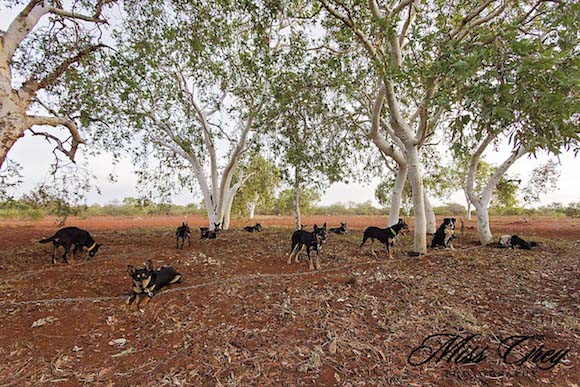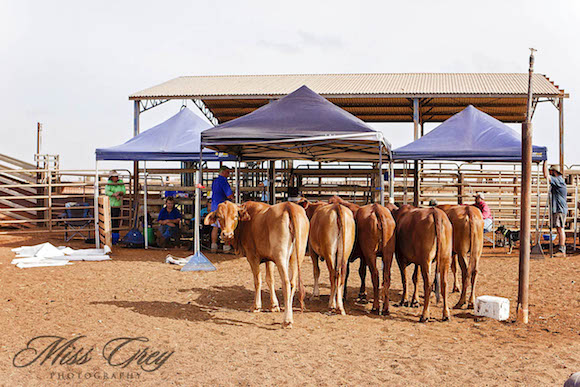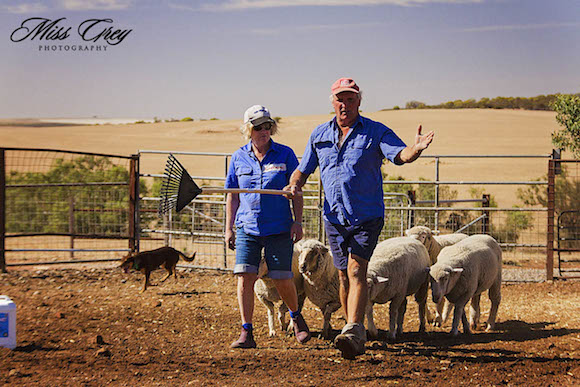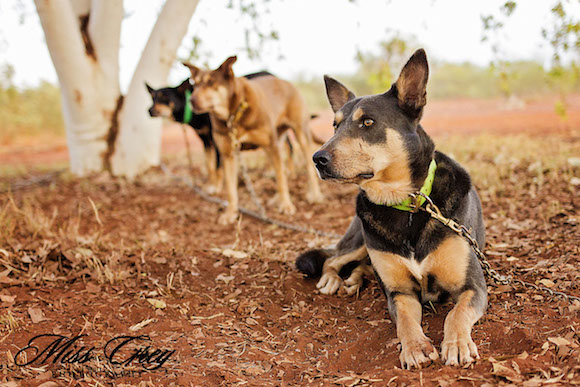Lessons learnt from Neil McDonald – Part 1
Host: Glenforrie Station
Written by Aticia Grey – Manager, Glenforrie Brahmans.
Last year I wrote a piece for the Downunder Magazine about how I got started with my team of Kelpies by attending one of Neil McDonald’s Advanced Livestock and Working Dog Schools. Well, this year I was fortunate enough to attend another three, one of which we organised on a station up in the West Pilbara near home. They were all fantastic and I have returned home inspired, motivated, and pretty broke after increasing my team to include a further two bitches, a pretty flash dog box for the back of my ute, and a four wheeler to cart them around on while working stock. But it is definitely worth it and I’m really looking forward to getting our mustering season underway so my Kelpies and I can continue improving on our weaner handling techniques. So I thought this time, I would enlarge a little on what I have been able to learn from these schools and hopefully you’ll find it as interesting as I have.
Lesson No 1. Keep your dogs tied up or restrained when not working or being taken for a supervised run. Now this one I found quite hard to understand to start with as I have only ever seen the two extremes, our heelers who are never tied up and dogs who are never let off (which I found quite cruel). So tying dogs up full time did not appeal to me at all (where was the harm in having them off all the time?) . . . until I was able to see why for myself.
At every school, there is at least one ‘Goldcoasting’ dog. A dog who is never tied up or restrained and has the run of the place. You can pick these dogs as soon as they are asked to work stock, as nine times out of ten they spend the majority of their time checking out the other dogs, smelling and marking scents, taking in the new surroundings, and generally ignoring the (by now quite embarrassed) owner who is trying to get the dog interested in the work at hand. There are always exceptions of course, but generally, a dog who is used to having the run of the place at home, is more inclined to work only when it suits him and if more interesting activities don’t present themselves. This though, can be something you have to see for your self to believe. I have and I do now.
What I was also lucky enough to see for myself was Neil with his team of 18 odd dogs and how right in the head they were. It’s hard to explain but these were dogs that had been on the chain all day, let off morning and night for a quick drink, feed and toilet break, and the majority tied back up again until that evening and yet they were all content. There was no sulking back to the chain (which my heeler has down to a fine art if I ever have the audacity to suggest it), no whining or complaining, and they were all . . . happy. Happier, of course, if they were one of the select few being taken out for a job, but never the less, they were all content in life and the rapport that Neil has with each and every one of his dogs is a great thing to see.
Lesson No 2. A dog’s natural instinct is to balance off you and draw stock towards you. It is really important to bring the natural instinct out of a pup first before trying to harness it too much and this is where it becomes really important to understand just how a dog sees things so you can train it in a way it understands. Neil explained it in my first school like this and it finally made me really understand. “It’s like yelling at the dog on a different radio channel. You can yell all you like, but it won’t make any difference. So you have to go over to the dog’s channel, teach things in a way he understands, and after a while, draw him back over to yours”. Dogs are also more receptive to visual commands rather that verbal, so Neil shows techniques that will bring out the correct response in a dog. This can then be labelled with a verbal command which the dog will learn to respond to as it becomes more experienced. As Neil will often say “Be a situation creator, not a dog trainer. Create situations which brings out the dog’s natural instinct and label it’s actions correctly.”
Tune in tomorrow for part two!




